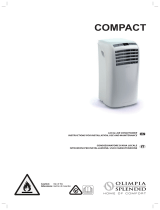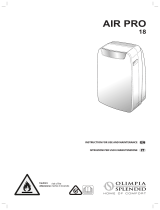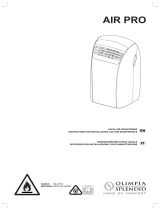
AQUARIA
ENGLISH
EN - 1
MAIN INDEX
0 - WARNINGS ........................................................................................................................................2
0.1 - GENERAL INFORMATION .............................................................................................................2
0.2 - SYMBOLS .......................................................................................................................................2
0.2.1 - Editorial pictograms ......................................................................................................................... 2
0.3 - GENERAL WARNINGS ...................................................................................................................3
0.4 - PROPER USE ................................................................................................................................. 7
0.5 - UNINTENDED AND POTENTIALLY DANGEROUS USE ...............................................................7
0.6 - WARNINGS FOR R290 REFRIGERANT GAS ...............................................................................8
1 - DESCRIPTION OF THE APPLIANCE .............................................................................................15
1.1 - FEATURES ...................................................................................................................................15
1.2 - IDENTIFICATION OF THE MAIN COMPONENTS .......................................................................15
2 - INSTALLATION ...............................................................................................................................15
2.1 - APPLIANCE TRANSPORT ...........................................................................................................15
2.2 - WARNINGS ...................................................................................................................................16
2.3 - INSTALLATION OF THE APPLIANCE ..........................................................................................16
2.4 - ELECTRICAL CONNECTION .......................................................................................................16
3 - USE OF THE APPLIANCE ..............................................................................................................17
3.1 - CONTROL PANEL SYMBOLS AND KEYS ...................................................................................17
3.2 - OPERATION OF THE APPLIANCE ..............................................................................................17
3.2.a - Preliminary operations...................................................................................................................17
3.2.b - ON/OFF key ..................................................................................................................................18
3.2.c - Fan speed .....................................................................................................................................18
3.2.d - Timer function ................................................................................................................................18
3.2.e - Activation of the display.................................................................................................................18
3.2.f - Humidity level setting ....................................................................................................................18
3.2.g - Child Lock function (Children safety).............................................................................................19
3.2.h - Wi function ................................................................................................................................... 19
3.2.i - Oscillation function ........................................................................................................................19
3.3 - MODE SELECTION ......................................................................................................................19
3.3.a - Laundry mode ...............................................................................................................................19
3.3.b - Dehumidication mode .................................................................................................................. 19
3.4 - WATER UNLOADING ...................................................................................................................19
3.4.a - Emptying the tank..........................................................................................................................19
3.4.b - Continuous water unloading .......................................................................................................... 20
3.5 - BLACKOUT ...................................................................................................................................20
4 - MAINTENANCE AND CLEANING ..................................................................................................20
4.1 - CLEANING ...................................................................................................................................20
4.1.a - Cleaning the appliance .................................................................................................................. 20
4.2 - FILTER CLEANING .....................................................................................................................21
4.3 - TANK CLEANING ........................................................................................................................21
5 - PRESERVATION OF THE APPLIANCE .......................................................................................... 21
6 - TECHNICAL DATA ..........................................................................................................................22
7 - TROUBLE SHOOTING ....................................................................................................................22
DISPOSAL
This symbol on the product or its packaging indicates that the appliance cannot be treated as normal domestic
trash, but must be handed in at a collection point for recycling electric and electronic appliances.
Your contribution to the correct disposal of this product protects the environment and the health of your fellow
men. Health and the environment are endangered by incorrect disposal.
Further information about the recycling of this product can be obtained from your local town hall, your refuse
collection service, or in the store at which you bought the product.
This regulation is valid only in EU member states.




























